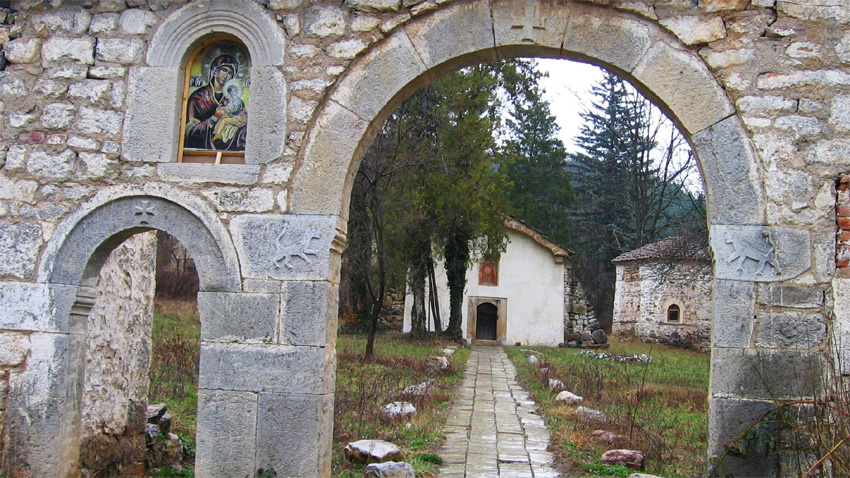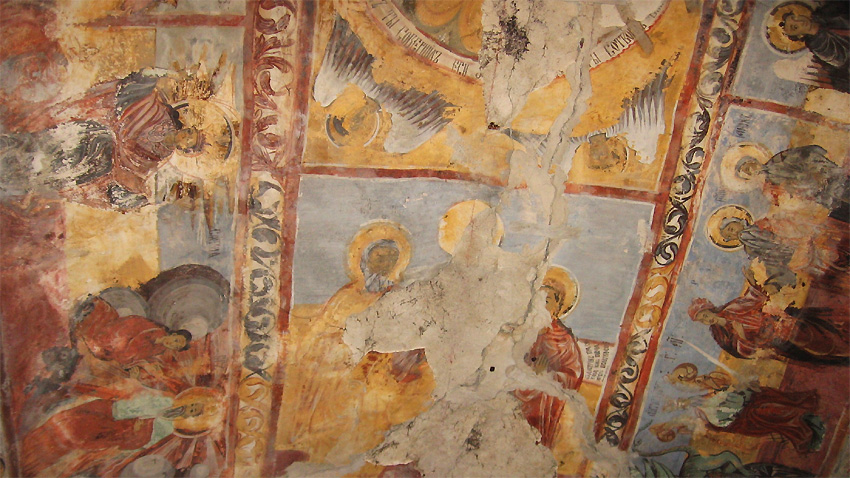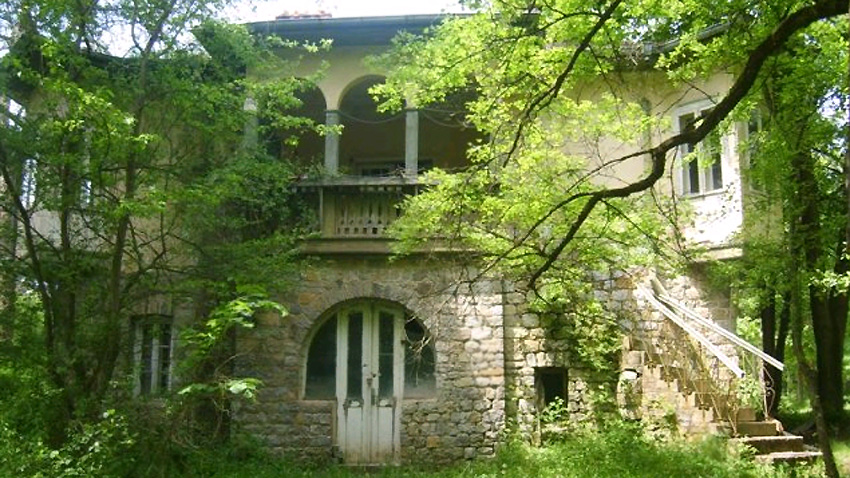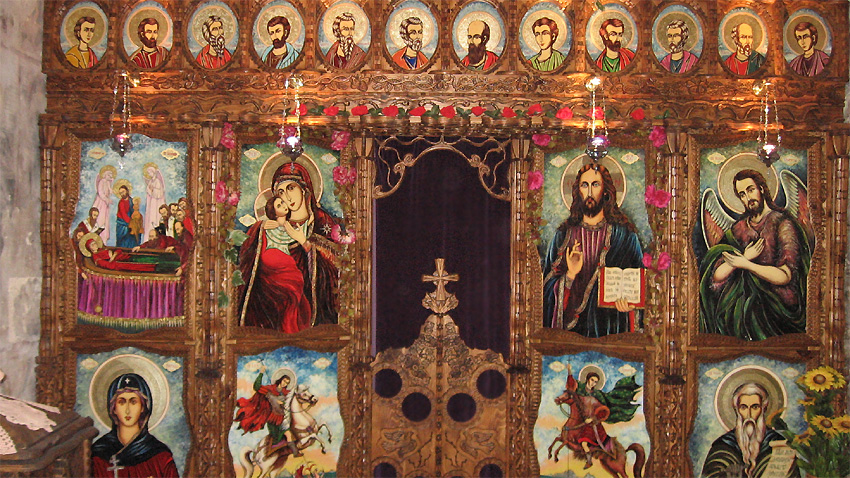The Assumption Monastery lies just two kilometers from Iskrets village and around 45 from Sofia, on the left bank of Sirishtnitsa River, nestled in the folds of the Balkan range and overshadowed by Gradishte peak where there once rose a fortress. Once, there was an ancient settlement here, a fact corroborated by the remains of bricks, tiles and pottery scattered around the monastery. These artifacts have helped archaeologists date the settlement to the 5th - 6th century AD. A major thoroughfare used to pass through here – via Sofia to Vratsa and Niš and it is probably one of the reasons why this is the site chosen for the monastery.
The Iskrets cloister was built in the 13th century. At the end of the 14th century it was razed to the ground by the Ottoman invaders, along with the fortress nearby. According to a donor inscription, in 1602 the Bulgarian population in these parts restored the monastery church. It is a single-nave church with a simplified plan, it has no dome and its solid walls are made of quarried stones. Outside, above the main entrance, the Virgin Mary with wings is depicted. As is typical of the mid 16th – 17th century, the monastery’s old part is somber, with only a small vaulted window on its Southern wall. This is in fact, the model of the run-of-the-mill village houses in the area. The slightly protruding arch and the apse were the only tell-tale sings there was actually a church here, sunk around one meter into the ground. Inside the church itself there is a big round stone with a slab and an inscription on it – treasure-hunters have lifted the slab to look for hidden gold underneath.

The church was finished during the Bulgarian National Revival period, when people in this part of the country grew wealthier. Inscriptions have come down to us showing that icons were painted inside not once but several times. One of these inscriptions indicates that in 1843 a wider and better lit narthex was added and that it was put up at the time of monk and churchwarden Marinko, in the summer of our Lord 1845. Descending two steps down from the narthex, we reach the original, dark part of the church. It was renovated, with icons painted where the old frescoes had been severely damaged or had fallen out altogether. Saints were painted, most of them depicted with long, dark red capes. In the first part of the church, the donor inscription makes mention of ordinary local dwellers – Ilko Doychin, Todor Lozanev, Zlatko Doychin. The monastery was brought back to life only to be razed to the ground later and forgotten.

The frescoes in the Iskrets monastery church go back to two periods – the 17th and the 19th century. The fresco of the Last Supper shows Jesus Christ holding what is known as akakia – a cylindrical purple silk roll – full of dirt, the Christian symbol that all things pass. Individual saints have been painted here, as well as scenes from major church events and the full Christian festive cycle. As is customary, on both sides of the door stand the archangels Michael and Gabriel, guardians of the house of God.
The fascinating baptistery - the confessional lies south of the church, the only one of its kind in any Bulgarian monastery. It was built in 1856 and on the inside its walls are covered in frescoes, most of them depicting the Holy Mother of God. Today it is closed to visitors and is in dire need of restoration.

The monastery housing quarters were built in the 19th century as two-storied buildings with a porch. At the turn of the 20th century they were donated to a hospital. In totalitarian times the monastery church was closed; nonetheless, the villagers from Iskrets would come here and light candles. The first church service after the democratic changes in 1989, took place on September 8, 1991 to mark the Nativity of the Virgin. On this day and especially on Assumption day, August 15, the church is always full of people. On the night before they mount a vigil, and the next day women bring votive loaves and grapes for the priest to sanctify. Church service is performed here only on major Christian holidays.

All remains of the monastery buildings were torn down in 2005. The only elements left standing are the baptistery and the church. A blueprint has been developed for a new monastery complex.
Dr. Valentina Sharlanova is Associate Professor with the Bulgarian Academy of Sciences Institute of Ethnology and Folklore Studies with Ethnographic Museum
English version: Milena Daynova
The Feast of the Epiphany - the entry of the Theotokos into the Temple - is one of the oldest and most revered feasts in the Orthodox world. It was introduced in Constantinople around the 8th century during the time of Patriarch Tarasius. It was six..
The Museum of the Jewish People in Tel Aviv , Israel, today commemorates the 130th anniversary of the birth of Dimitar Peshev, a righteous man of the nations of the world, deputy chairman of the 25th National Assembly of Bulgaria, the Bulgarian..
The Bulgarian Land Forces are celebrating their holiday today. A statement from the Ministry of Defense's press center notes that November 19, 2024 marks 139 years since the glorious victory at Slivnitsa and 146 years since the establishment of..
The head of the statue of Tyche, the goddess of Philippopolis, has been discovered in the Episcopal Basilica in Plovdiv, said the head of the..

+359 2 9336 661
